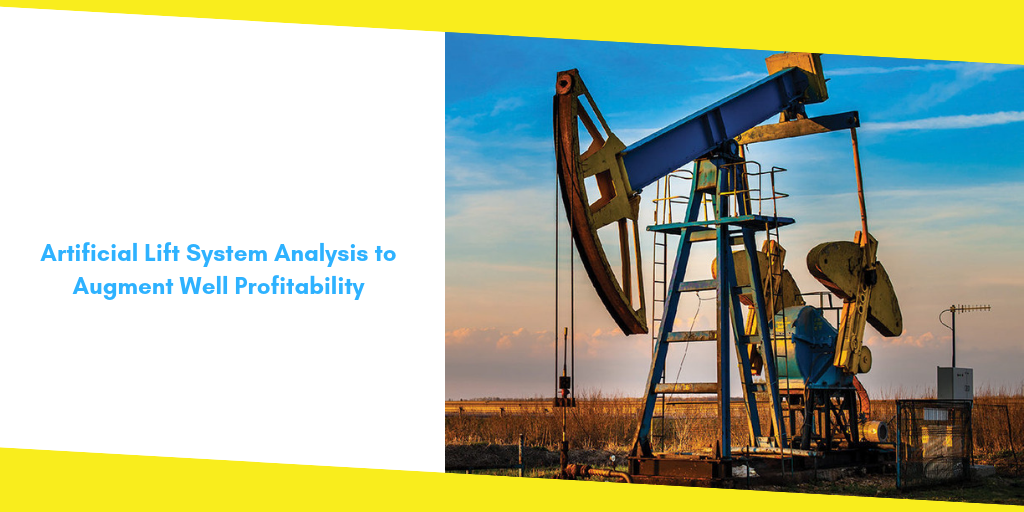Well Profitability: Artificial Lift System Analysis to Augment Well Profitability
 Since long time now, oil companies working upstream have been using artificial lift devices so that production of their mature wells both onshore and offshore is increased.
Since long time now, oil companies working upstream have been using artificial lift devices so that production of their mature wells both onshore and offshore is increased.
The solutions are also getting used in the fresh unconventional oil wells so that steeply going down rates can be minimized the production of an individual well is maximized.
It is very vital for well owners, operators, independent project and engineering firms along with other stakeholders to analyze Artificial Lift Systems. The reason being- everybody wishes to squeeze out a little more profit per every oil barrel mainly when the market is highly competitive and oil prices remain highly volatile.
Contents
ToggleThe Era of Automation
With the period of getting easy oil is at the verge of closing down easy oil coming to an end and new sources of oil are getting revealed, expanding well profitability becomes vital for oil companies. Ultra-Deepwater, Shale Oil and Gas and Subsea, along with a host of other energy resources are completely altering the global market and infrastructure for oil. Hence, independent Engineering and production, owner-operators companies understand how vital it is to invest in automation along with other technology solutions to actuate enhanced production, get better recovery, and make sure less experienced personnel with more efficient operations get implemented.
Artificial lift equipment enables you to get over bottom whole pressure and helps a well to produce at the asked rate. The basic process is by either injecting gas into the fluid column such that hydrostatic pressure is reduced by using a downhole pump such that additional lift pressure downhole is enabled.
Artificial Lift is the Key Instrument
The majority of oil and gas wells become unstable at certain stage during production days, mainly at the tail end of production, limiting average production rates and oil and gas recovery. This instability can occur for a variety of reasons. These include gas or cone water breakthrough; the water accumulation, oil or condensates in the pipeline (slugging); or increased pressures in the well. Artificial lift is a key instrument in bolstering recovery from older fields.
With this gas lift, gas gets injected into the production tubing to reduce the impact of the hydrostatic pressure in wells where the reservoir pressure is no longer sufficient to force the hydrocarbons to upper surface. By reducing the oil viscosity and thus allowing reservoir liquids to enter the well bore at higher flow rates, fields around the world can enjoy improved reservoir performance.
Selecting and Monitoring the Lift Technology
Maximum oil and gas wells working worldwide need one or other type of artificial lift in their life cycle. Picking the correct technology needs detailed analysis, which includes water, oil, and gas property predictions; how much pressure is lost between inflow and wellhead; ratio variation within gas and oil; and water cut over certain time period.
Once the system is implemented, to monitor and optimize the artificial lift system remains equally vital, as inappropriate operation of this system usually ends up in higher operating costs, finally requiring further capital investment. Monitoring usually happens through surface and downhole sensors, as they suffice basic information regarding the performance of the lift. This info however may not always suffice sufficient information to identify if the gas and oil well works with highest efficiency. These calculations mandate sophisticated and complex mathematical model. The goal is to monitor physical plus chemical processes occurring during the lifting process.
Why Leverage an Artificial Lift Optimization Solution
Based on how much production an individual Well Profitability is capable of, the fiscal profit of adding performance by mere 3% to 4% could result into millions of dollars annually. Hence, investing in optimization through artificial lift has to be realized as meaningful ROI in which all the players in oil and gas field can measure as well as manage. According to industry sources, huge majority of these wells, more than 90%, are producing results that call in for investing into an artificial lift unit. Hence, one should use the potential of an artificial lift.
Even when artificial lift solutions are basically used in mature wells, more and more unconventional shale oil and shale gas wells are supposedly incorporating artificial lift right in the beginning of well production due. Plus, newer study conclusions are indicating that field production could be bettered through employing different types of artificial lift optimization solutions at various stages of a well’s production period.
Recommended For You
Top 10 Pharma Franchise Companies in India by Rednirus Suppliers
Most Inside
Most Inside offers high-quality recommendations and valuable updates to enhance all aspects of your life, providing premium guidance and enriching experiences.




